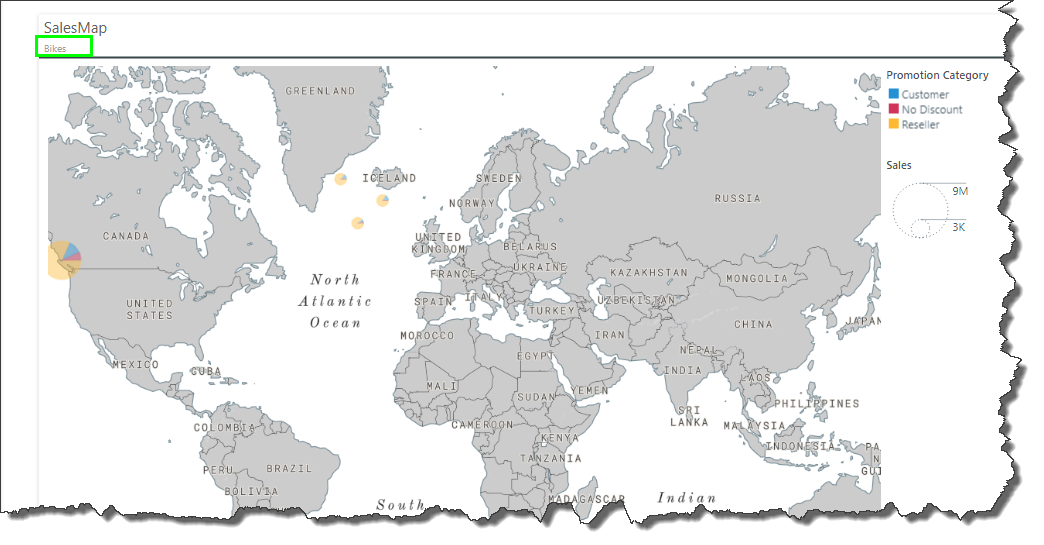Present Targets allow users to apply interactions triggered by users from visualizations on one slide to different visualizations on different slides in the presentation. They are also used to capture settings from the external launch of a Present dashboard (either via URL or embedding), that can be used to initialize slicers and visualizations.
Targets for Cross Interactions
You can cross filter visualizations across the presentation, meaning you can pass values from one visual to another, across different slides using targets. When the presentation is viewed in run time, visuals across different slides can be cross-filtered using the interact function. In this way, the target acts as a "highway" between slides, that allows users to pass one set of settings from one slide to the next (as designed by the presentation developer).
Targeting Content from External Inputs
Targets can also be used to pass values from external URLs or embed code to both visualizations and slicers - effectively allowing developers to change the initial values of targeted items based on how they are opened (or launched). This is called target parameterization, and is an extension of direct URL loading or URL parameterization and is also exposed as set of functions in the embed APIs.
- URL Parameterization: involves writing or copying the presentation's direct URL link, and adding to it the presentation's target(s) along with the member elements that should be loaded from the target interaction. These links can be shared with others, and depending on the presentation's runtime settings and the recipient's license type and profile, they can be a way to ensure that the recipient has access to the given data only.
- Embedded Parameterization: involves writing JavaScript code to embed content on host page, and then passing a filter item to a named target, to inject it into the launch of that embedded item when it loads. Click for more on the embedding API, embedded filters and embedded targets,
Targeting Slicers
You can also target an interaction to a slicer and use target parameterization to load the presentation with a given slicer selection applied. The slicer has actions attached to it, the Slicer Actions will also be triggered as part of the load up.
Accessing Targets in Present
The Targets panel can be expanded from the left side of the interface (green highlight below):
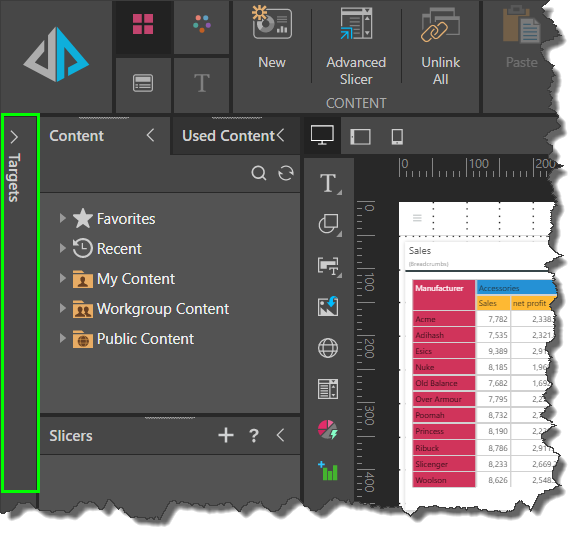
Once expanded, you'll see three options:
- Add: click the add sign (green arrow below) to add a new target.
- Dock: click the pushpin icon (yellow arrow) to pin the target panel.
- Collapse: click the collapse icon (blue arrow) to close the panel.
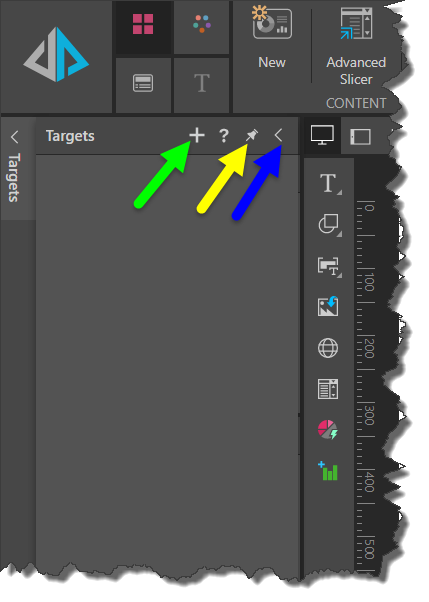
Once you pin the Targets panel it will be docked beside the Content panel. When you click the add icon, a new target will appear in the panel (green highlight below):
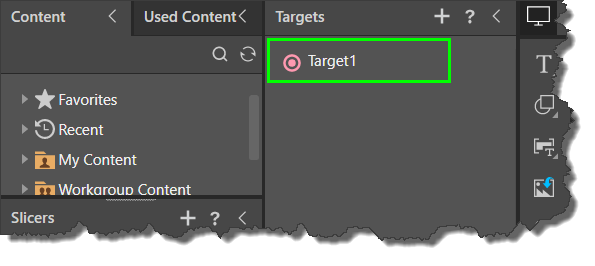
Right click on the target to rename it or delete it:
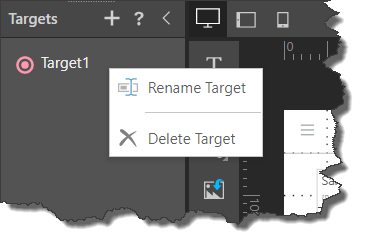
How to Configure Targets
Follow the steps below to configure targets.
Step 1
Add a new target.

Step 2
Add an interaction from the driver visual to the target. The driver visual is the visual whose elements will be used to filter the target visual.
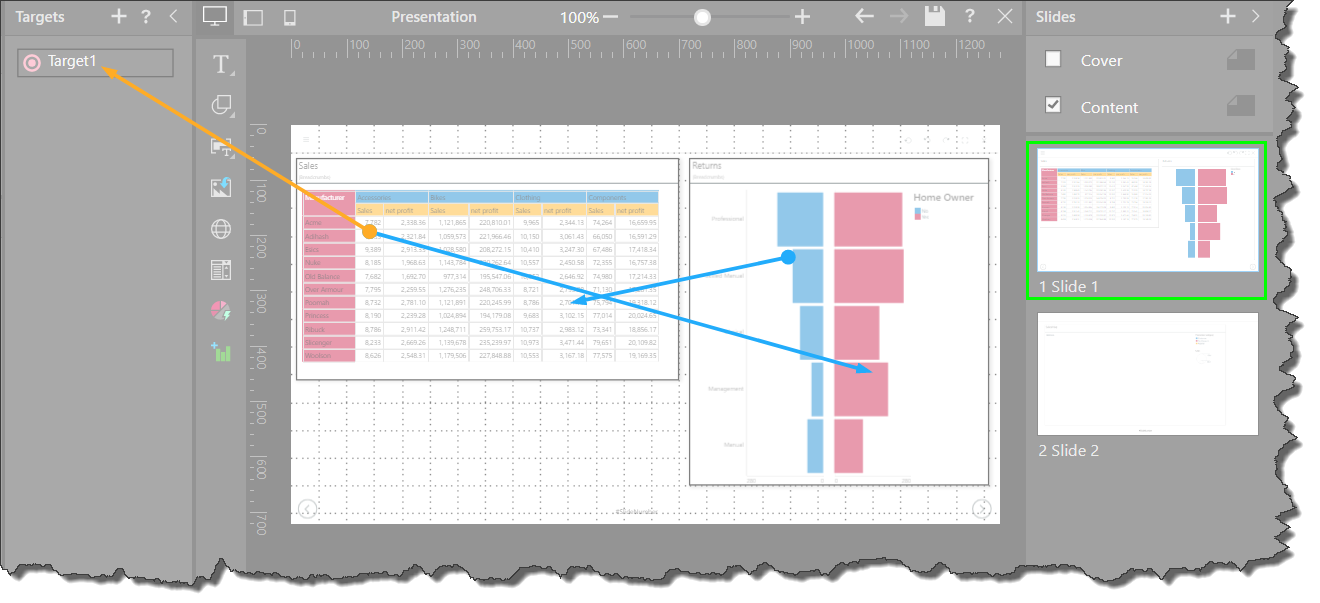
Step 3
Go to the slide containing the target visual. The target visual is the visual that will be filtered by the driver visual. Add an interaction from the target to the target visual.

Step 4
Launch the presentation in runtime. Run a cross-interaction from the driver visual. In this example, the Bikes member element is used for the interaction.
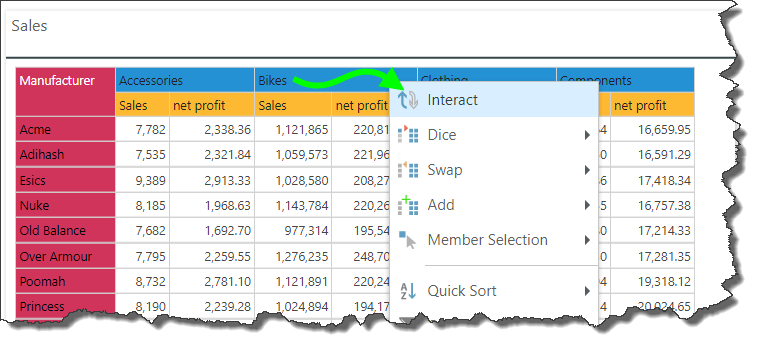
Step 5
Navigate to the slide containing the target visual; the breadcrumb trail will show that the visual has been filtered by the selection made at Step 4 (green highlight below).
